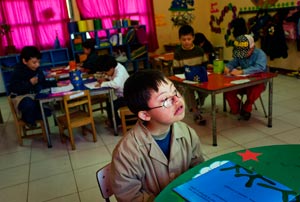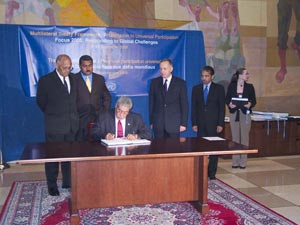The Convention on the Rights of the Child
Definition of the Convention
The Convention on the Rights of the Child is part of the legally binding international instruments for the guarantee and the protection of Human Rights. Adopted in 1989, the Convention’s objective is to protect the rights of all children in the world.
The 1st legally binding text that protects the rights of children
 The Convention is the first legally binding international instrument of Children’s Rights protection. That means that it establishes an obligatory force to the body of all the rights it stipulates.
The Convention is the first legally binding international instrument of Children’s Rights protection. That means that it establishes an obligatory force to the body of all the rights it stipulates.
That implies that the States that ratified the Convention are obligated to respect and to ensure that all rights it establishes in the name of children are respected.
The most comprehensive text for the protection of children’s rights
This Convention represents the most comprehensive international text that exists in terms of children’s rights protection. Even though other international instruments, such as the International Pacts, the ILO Conventions, and the international adoption Convention guarantee children’s rights, the Convention is the only text to address all aspects of children’s rights.
 The Convention comprises 54 articles that establish the body of all children’s civil and political rights, as well as their economic, social and cultural rights.
The Convention comprises 54 articles that establish the body of all children’s civil and political rights, as well as their economic, social and cultural rights.
It also advocates the protection and promotion of the rights of special needs children, of minority children and of refugee children.
This Convention establishes 4 principles that must govern the implementation of all the rights it advocates:
- Non-discrimination
- Best interest of the child
- Right to life, survival and development
- Respect for the views of the child
The Convention was completed in 2000 with two Protocols and in 2011 with a thrid one:

- The optional Protocol regarding the sale of children, children prostitution and children pornography.
A legally binding instrument endowed with a monitoring mechanism
The Convention advocates, in part II, that its implementation be monitored by a committee of experts. It is the Committee on the Rights of the Child which oversees that all participating States respect the Convention as well as the two additional Protocols.

